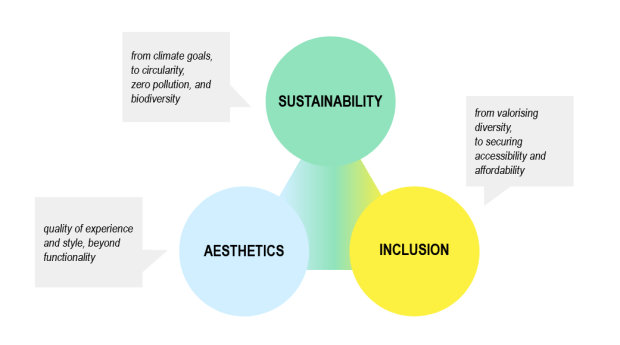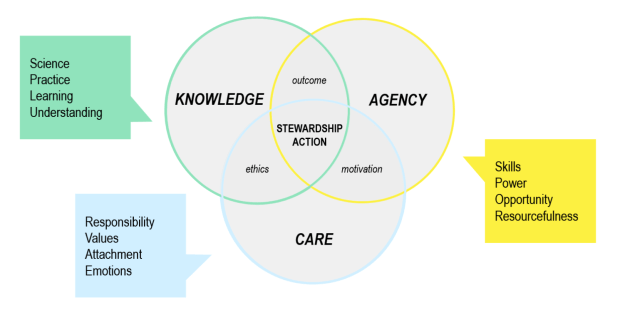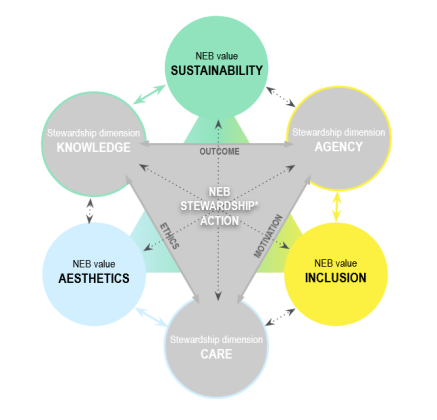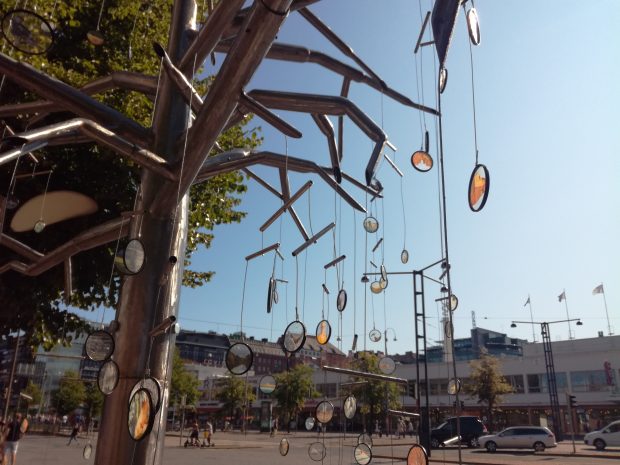Our planet cannot sustain us with our current way of life; climate change has already disrupted its human and natural systems. According to the newest IPCC report, there is still hope, but swift and decisive actions are needed right now, on all levels, from the individual to local, national and global. Acting now, it is possible to cut the greenhouse gas emissions to half compared to 2019 by the end of this decade [1]. Change is seldom easy—harmonising our living with our planet calls for our collective will and skill. Climate action and sustainable lifestyle must trickle down to our everyday lives. We all need to do our bit and this blog post shares Metropolia’s approach to the topic.
Much like the sustainability science approach [2], Metropolia’s research, development and innovation (RDI) activities can be characterised as problem-based, transdisciplinary and solution-oriented. They aim to contribute to a fair societal sustainability transition, particularly in the urban Helsinki region contexts. This ambition has led Metropolia to join as a partner in the New European Bauhaus (NEB) initiative [3] that aspires to translate the European Green Deal [4] into a tangible (and positive!) experience for all Europeans to participate in and progress together. The pan-European initiative seeks to facilitate and steer the societal transformation along three inseparable values: sustainability, aesthetics, and inclusion.

Picture 1: The New European Bauhaus pursues to facilitate and steer the transformation of our societies based on three inseparable values of sustainability, aesthetics, and inclusion[3]
Conscious action for sustainability transition
The concept of stewardship, often defined as the wise and responsible use of natural resources [4], provokes thoughts and ideas for bringing the triad of NEB values to life. In sustainability science, stewardship refers to the active shaping of trajectories of social-ecological change to support resilience and human wellbeing [5], which, in essence, also depicts the core aim of the NEB initiative.
As the quest for sustainability expands beyond a top-down implementation of technical expertise, stewardship demands caring: personal, value-based involvement and engagement with the social and ecological processes related to the urban landscape in question. In order to succeed, a stewardship action requires knowledge and learning about how to reach desired outcomes – a well-meaning and decisive action, without a proper understanding of the local systems and their dynamics, may lead to unwanted and harmful environmental or societal effects. On the other hand, even the most caring, well-knowledged, and skillful stakeholders cannot achieve lasting solutions without real agency to influence governance processes.[5] Thus, effective stewardship in urban landscapes calls for care, knowledge, and agency combined. [5,7]

Picture 2: Framework for research on stewardship proposed by Enqvist and colleagues includes three intertwined dimensions of care, knowledge, and agency [5,7,8]
Fleshing out the NEB values
The three dimensions of stewardship unlock intriguing reflections on the NEB values of sustainability, aesthetics, and inclusion. All three stewardship dimensions have interlinkages with all NEB values and bring practical pointers for the initiative’s implementation. For example, the NEB value of aesthetics (but also inclusion and sustainability) can connect inspiringly with the care aspect of stewardship as studies [7,9,10] indicate that the sense of place affects motivations for pro-environmental behaviour.
Layering the two frameworks together as one forms a more in-depth picture of the task at hand; the pathfinding for sustainability transitions. Adding the layer of stewardship dimensions to complement the NEB values draws to attention the capacities needed for effective individual and collective actions pursuing sustainability. At the same time, the NEB values describe the aspired characteristics of both the development process and its outcomes.
At its best, the developed framework can help harness the resources of Metropolia – its multidisciplinary staff, students, and learning environments – to facilitate, on its part, the needed sustainability transitions in collaboration with the network of partners, ranging from citizens to NGOs, companies and city administrations. In the coming years, this working model can nurture collective and active stewardship to shape our city environments into beautiful, inclusive and sustainable places that support wellbeing in the urban dwellers’ daily lives.

Picture 3: The combination of NEB values and stewardship dimensions layered together outlines a potential starting point for a NEB stewardship action framework.
From paper to action
Binding the mentioned two layers together in practical action calls for a well-thought working model. In the ongoing Hytke project, Metropolia develops a Framework for Participatory RDI Partnership that broadens participation and the role of stakeholders towards active partners throughout the RDI process. The participatory RDI partnership underlines that everyone has valuable expertise to share in the knowledge co-production for sustainable wellbeing.[10] The NEB related local collaborative development actions will provide an excellent opportunity for testing the framework in practice.
Author
Päivi Keränen (MA, PhD candidate) works as a project manager and coordinator of the ’Sustainable urban development’ theme at the ’Functional City for People’ innovation hub of Metropolia. Designer at heart, she promotes and weaves together practical NEB related initiatives in collaboration with partners from within and outside of Metropolia. In her previous projects, she has had the opportunity to explore the combinations of design and resilience thinking, novel XR technologies, and participatory urban planning processes. Currently, she works as a project specialist in the transdisciplinary Hytke project shaping participatory co-research, development, and innovation activities of Metropolia to boost the sustainable wellbeing in daily lives. She also works with the Circular Green Blocks project applying service design methods in co-developing circular economy solutions suitable for the city block level.
References
- IPCC (2022). Summary for Policymakers [H.-O. Pörtner, D.C. Roberts, E.S. Poloczanska, K. Mintenbeck, M. Tignor, A. Alegría, M. Craig, S. Langsdorf, S. Löschke, V. Möller, A. Okem (eds.)]. In: Climate Change 2022: Impacts, Adaptation, and Vulnerability. Contribution of Working Group II to the Sixth Assessment Report of the Intergovernmental Panel on Climate Change [H.-O. Pörtner, D.C. Roberts, M. Tignor, E.S. Poloczanska, K. Mintenbeck, A. Alegría, M. Craig, S. Langsdorf, S. Löschke, V. Möller, A. Okem, B. Rama (eds.)]. Cambridge University Press.
- Soini, K. (2017). Kestävyystiede–kestävyystutkimuksen uusi paradigma?. Tieteessä tapahtuu, 35(1).
- European Commission (2021). New European Bauhaus: new actions and funding to link sustainability to style and inclusion. Retrieved April 21, 2022
- European Commission (2019). A European Green Deal: Striving to be the first climate-neutral continent. Retrieved April 24, 2022
- West, S., Haider, L. J., Masterson, V., Enqvist, J. P., Svedin, U., & Tengö, M. (2018). Stewardship, care and relational values. Current opinion in environmental sustainability, 35, 30-38.
- Andersson, E., Enqvist, J., & Tengö, M. (2017). Stewardship in urban landscapes. Published in C. Bieling and T. Plieninger, (eds). The Science and Practice of Landscape Stewardship. Cambridge University Press, Cambridge, UK.
- Enqvist, J. (2017). Stewardship in an urban world: Civic engagement and human–nature relations in the Anthropocene (Doctoral dissertation, Stockholm Resilience Centre, Stockholm University).
- Enqvist, J. P., West, S., Masterson, V. A., Haider, L. J., Svedin, U., & Tengö, M. (2018). Stewardship as a boundary object for sustainability research: Linking care, knowledge and agency. Landscape and Urban Planning, 179, 17-37.
- Larson, S., De Freitas, D. M., & Hicks, C. C. (2013). Sense of place as a determinant of people’s attitudes towards the environment: Implications for natural resources management and planning in the Great Barrier Reef, Australia. Journal of environmental management, 117, 226-234.
- Halpenny, E. A. (2010). Pro-environmental behaviours and park visitors: The effect of place attachment. Journal of environmental psychology, 30(4), 409-421.
- Sipari, S., Helenius, S., Vänskä, N. & Salonen, A. O. (2022) Osallistuvalla TKI-kumppanuudella kohti kestävää hyvinvointia?









1 Kommentti
Dear colleagues,
Is there a newsletter also?
Kind regards,